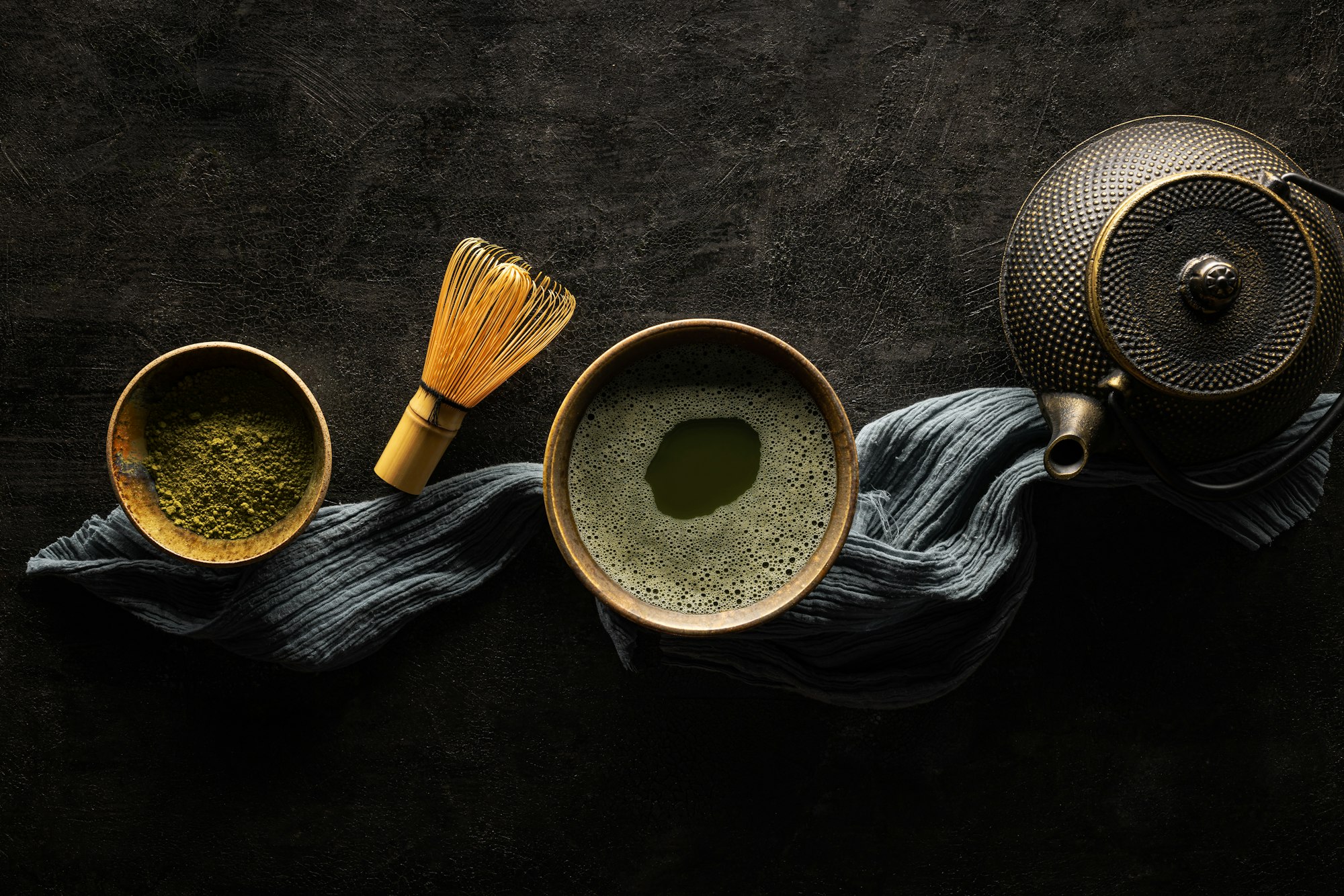Can You Prepare a Traditional Japanese Matcha Tea Ceremony at Home?

Welcome, dear readers! Today we’re challenging the seemingly complicated: preparing a traditional Japanese matcha tea ceremony right in the comfort of your own home. But with some patience, the right equipment, and a desire to honor this beautiful tradition, you will be able to create a ceremony that not only satiates your taste buds but also serves as a calming meditative practice. Let’s step into the world of matcha, where the powdered green tea leaves meet hot water, whisked meticulously in a bowl, creating an experience that is steeped in tradition and ceremony.
The Fascinating History of Matcha Tea Ceremony
Before we delve into the step-by-step process of preparing a traditional Japanese matcha tea ceremony, let’s take a moment to appreciate its rich history and cultural significance. This ancient practice has its roots in Zen Buddhism, where the simple act of preparing and consuming tea is transformed into a spiritual experience. The ceremony, known as ‘Chado’ or ‘the way of tea’, symbolizes harmony, respect, purity, and tranquility.
Lire également : What’s the Secret Behind a Perfectly Balanced Thai Papaya Salad (Som Tam)?
Matcha, the star of this ceremony, is a finely ground powder made from high-quality, shade-grown tea leaves. The traditional method of preparing matcha involves a careful process of mixing the powder with hot water and whisking it until a frothy consistency is achieved.
Essential Tools for a Home Matcha Tea Ceremony
To successfully conduct a matcha tea ceremony at home, you will need to prepare by gathering the proper tools. Traditional Japanese tea ceremonies involve a specific set of utensils, each playing a unique role in the creation and serving of the tea. Here are the essential tools:
Avez-vous vu cela : What’s the Best Way to Create a Spicy Chipotle and Orange Marinade for Grilled Chicken?
- Chawan (Tea Bowl): A chawan is a bowl specifically designed for matcha preparation and consumption. It is typically wide and shallow, allowing for the proper whisking of the matcha powder.
- Chasen (Bamboo Whisk): This tool is used to mix the matcha powder with water and aerate it to create a frothy tea.
- Chashaku (Bamboo Scoop): A chashaku is used to scoop the matcha powder into the chawan.
- Kensui (Waste Water Bowl): A kensui is a bowl where the used water and tea residues are discarded after cleaning the chasen.
- Yakan (Kettle): A yakan is a traditional Japanese kettle used to heat the water for the tea.
- Fukusa (Silk Cloth): This cloth is used to clean the tea utensils.
Step-by-Step Preparation of a Matcha Tea Ceremony at Home
Once you have your tools in place, it’s time to prepare for the ceremony. Keep in mind that the Japanese tea ceremony is not merely about drinking tea, but about preparing a bowl of tea from your heart.
- Purification: Begin by purifying the tea utensils with hot water. Rinse the chawan, then whisk the hot water with the chasen in the bowl. Dispose of this water in the kensui.
- Preparing the Matcha: Using the chashaku, scoop 2-3 spoons of matcha powder into the chawan. Then, add a small amount of hot water. Remember, the water should be hot, but not boiling.
- Whisking: Using the chasen, whisk the matcha and water. Begin slowly to dissolve the matcha, then whisk faster, moving the chasen back and forth in the chawan until the tea becomes frothy.
- Serving the Tea: Once the matcha is prepared, it is traditionally served with a small sweet to balance its slightly bitter taste. The host will then present the bowl to the guest, who will take a moment to admire the bowl before enjoying the tea.
Hosting a Matcha Tea Ceremony for Guests
Hosting a traditional Japanese matcha tea ceremony for guests at your home can be a unique and rewarding experience. It’s not just about serving tea, but about providing an atmosphere of peace, respect, and hospitality.
Prepare your space in a way that fosters tranquillity. This could be as simple as having a clean, uncluttered space, or as elaborate as creating a traditional Japanese tearoom environment. Remember, the primary aim is to provide a serene atmosphere where your guests can enjoy their matcha tea.
Next, decide on the order of your guests. In a traditional ceremony, there is a main guest or ‘shokyaku’, and a secondary guest or ‘jikyaku’. The main guest will be served the tea first.
Lastly, remember the principles of a Japanese tea ceremony – harmony, respect, purity, and tranquillity. These principles should guide your actions as you serve your guests, creating an experience that is about more than just drinking tea.
The Health Benefits of Matcha Tea
While indulging in a traditional Japanese matcha tea ceremony is a tranquil and meditative experience, it’s also a great way to enjoy some health benefits. Matcha green tea is known for its high antioxidant content, particularly catechins which are known for their cancer-fighting properties. It also contains L-theanine, an amino acid that promotes relaxation without drowsiness, which aligns perfectly with the calming and mindful nature of a tea ceremony.
The fine tea powder, matcha, is made from the entire leaf, which means you ingest all the nutrients. This differs from standard green tea where the leaves are steeped and then removed. Consuming the entire leaf increases the amount of caffeine and antioxidants you get from your cup of matcha tea.
Matcha tea also aids in weight loss by boosting metabolism and burning fat. A study found that consuming matcha increased thermogenesis (the body’s own rate of burning calories) from a normal 8%-10% of daily energy expenditure to between 35% and 43%.
It’s important to note that while matcha tea offers numerous health benefits, it should be consumed in moderation. Overconsumption can lead to caffeine toxicity, which can cause insomnia, stomach upset, and increased heart rate.
The Art of Appreciating Matcha Tea Ceremony
The Japanese tea ceremony isn’t just about the preparation and consumption of matcha tea. It’s a spiritual and aesthetic experience that encourages mindfulness and appreciation of the beauty in everyday life.
When you take part in a traditional Japanese tea ceremony, you’re stepping into a world where every movement is deliberate and every item has a place and purpose. This focus on mindfulness can help reduce stress and increase feelings of peace and tranquility.
The ceremony revolves around the principles of ‘Ichigo Ichie’, a concept associated with the tea ceremony that translates to ‘one time, one meeting’. It serves as a reminder that each tea ceremony is a once-in-a-lifetime encounter that will never occur again in exactly the same way.
Conclusion
A traditional Japanese matcha tea ceremony at home is achievable and offers a unique way to appreciate the art, culture, and history of Japan. Whether you’re a long-time lover of matcha tea or a newcomer to this vibrant green drink, a tea ceremony gives you a profound appreciation of the tranquil and thoughtful process behind each sip.
Remember, the core of the tea ceremony lies in the principles of harmony, respect, purity, and tranquility. By embracing these principles and the detailed steps of matcha preparation, you can turn the simple act of drinking tea into a meditative and meaningful experience.
In conclusion, a traditional Japanese matcha tea ceremony is a delightful journey that transcends beyond the taste and health benefits of matcha green tea. It’s an enriching experience that encompasses tradition, hospitality, aesthetics, and mindfulness.
